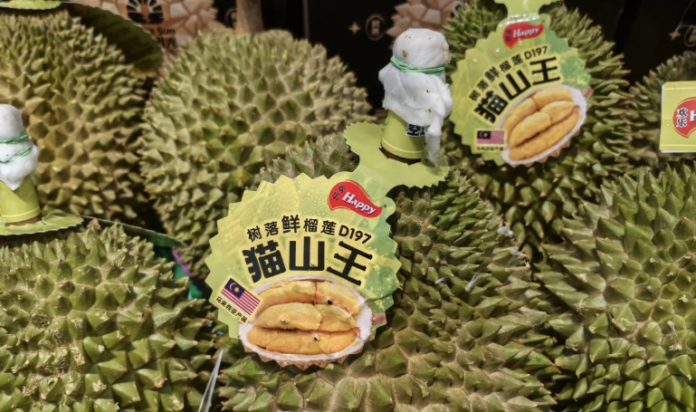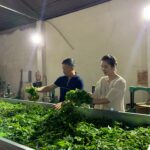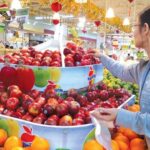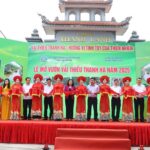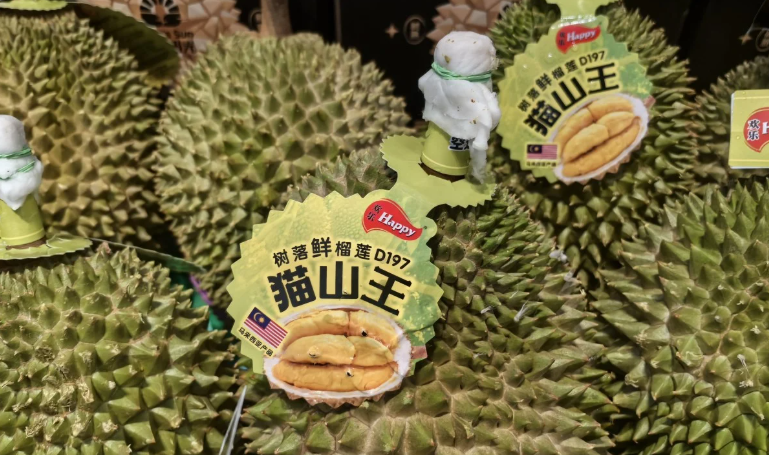
Illustrative Image
The China-Laos Railway, a significant infrastructure project under the Belt and Road Initiative (BRI), is substantially enhancing trade cooperation between China and Southeast Asia, particularly in the agricultural sector.
Among the myriad of Southeast Asian agricultural products, the export of Thai durians to China has witnessed steady growth thanks to the China-Laos Railway. So far this year, the volume of Thai durians and other tropical fruits imported by China through the Mohan border gate in Yunnan Province, southwest China, has increased by 25% compared to the same period last year, according to a report published on the official WeChat account of the China State Railway Group Co., Ltd.
Experts attribute the significant increase in agricultural products, including Thai durians, entering the Chinese market to the enhanced transport capacity of the China-Laos Railway and improved clearance efficiency at the border. Since the launch of express delivery services in January 2022, the cost of transporting Southeast Asian fruits has decreased by 60% compared to traditional road transport, while the average retail price in the domestic market has dropped by 30%.
“The China-Laos Railway and other regional transportation projects are facilitating smoother trade flows, reducing transportation costs, and enhancing market accessibility,” said Xu Liping, director of the Center for Southeast Asian Studies at the Chinese Academy of Social Sciences, in an interview with the Global Times.
According to Xu, these improvements are expected to benefit Thai exporters by offering more efficient logistics solutions and reducing the time required to bring perishable goods such as fruits and vegetables to market.
The reduced logistics costs also benefit Chinese consumers. “A month ago, a standard box (16 kg) of durian varieties like Golden Pillow ranged from 1,100 yuan ($153) to 1,200 yuan, but now it costs only 730-780 yuan. The price has dropped significantly,” said Wang, a fruit vendor at the Xinfadi wholesale market, one of Beijing’s largest agricultural product markets.
High-quality Thai agricultural products, especially durians, mangosteens, and longans, are highly sought-after in China, while Thai rice also has a strong presence.
As China is Thailand’s largest trading partner and one of its most important sources of investment, the vast Chinese market absorbs a significant volume of Thai durians and other agricultural products. According to data released by the General Administration of Customs of China in January, bilateral trade reached $133.98 billion in 2024, up 6.1% year-on-year.
According to the Bangkok Post, Thailand is ramping up efforts to boost agricultural exports to China, with cassava and rice identified as key priorities, said Thai Commerce Minister Pichai Naripthaphan.
According to Xinhua News Agency, the China-Thailand high-speed railway, another key infrastructure project under the BRI, is expected to be completed by 2030, offering one-stop services for cargo. Xu also highlighted broader regional cooperation through the China-ASEAN Free Trade Agreement and the Regional Comprehensive Economic Partnership, describing them as gateways for Southeast Asian businesses to access the Chinese market more efficiently while promoting technology transfer and cross-border investment.
Shark Hưng ‘Flexes’ by Selling Tea at a 5-Star Hotel in Hanoi: A Premium Price is a Win for Farmers
Shark Hưng, a prominent entrepreneur and investor, emphasizes the importance of branding and premium pricing as a strategy to elevate the value of ancient Vietnamese San Tuyet tea trees.
Luscious Lychees: Ready for Their Global Debut at Premium Prices
At the 2025 Lychee Consumption Promotion Conference, local authorities, businesses, and international partners united in their determination to take the exquisite lychee specialty to greater heights. With a shared vision, they aim to expand the reach of this delicious fruit, accelerate its journey to new markets, and elevate its value to new heights.
The Tasty Treats of Thanh Ha: A 2025 Hai Duong Lychee Festival
In 2025, Thanh Ha district – the lychee capital of Hai Duong province – boasts 3,300 hectares of lychee trees ready for harvest, with an estimated yield of 40,000 tons. The lychees from Thanh Ha are recognized as a flagship product, highly valued for export, and are gradually making their way into premium markets such as the US, EU, Japan, South Korea, the UK, and the UAE.
Unlocking the Green Channel: China to Facilitate Trade for Vietnamese Agricultural Products
The Ministry of Agriculture and Environment delegation has recently met with the General Administration of Chinese Customs to establish a “green channel” mechanism for Vietnamese agricultural products. This mechanism aims to facilitate expedited clearance at border gates for fresh fruit exports during peak harvest seasons.

